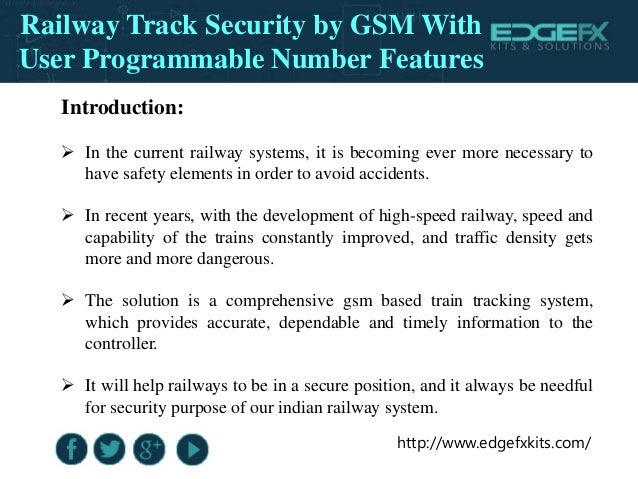Railway Track Crack Detection System Ppt Download

August 21, 2006 -- Researchers at the University of California, San Diego have developed a new technique they said is better able than currently used technology to find defects in steel railroad tracks, including hard-to-find internal cracks that can break under the weight of passing trains. Defects in the rail account for about one-fourth of the 1,000 annual track-caused train derailments in the U.S., according to the Federal Railroad Administration (FRA), the federal agency charged with enforcing rail safety regulations. A team led by UCSD structural engineering professor Francesco Lanza di Scalea describes in the Aug. 22 issue of the Journal of Sound and Vibration a defect-detection technique that uses laser beam pulses to gently “tap” on steel rails.
Each laser tap sends ultrasonic waves traveling 1,800 meters per second along the steel rails. Downward facing microphones are positioned a few inches above the rail and 12 inches from the downward pointed laser beam. As the prototype vehicle rolls down the test track delivering laser beams taps at one-foot intervals, the microphones detect any telltale reductions in the strength of the ultrasonic signals, pinpointing surface cuts, internal cracks, and other defects. In March 2006, Lanza di Scalea, project scientist Piervincenzo Rizzo and doctoral students Stefano Coccia and Ivan Bartoli tested a prototype vehicle equipped with the UCSD technology at a test track in Gettysburg, PA. The researchers detected 76.9 to 100 percent of internal defects and 61.5 to 90 percent of surface cuts in dry and wet conditions, respectively.
Canon Imageclass Mf6550 Driver Download. The UCSD team was supported by ENSCO, Inc. Crescent Solitaire Download For Ipad more. , an engineering and technology company headquartered in Falls Church, VA, that develops inspection technologies for the Department of Transportation, other government agencies, and railroads. Lanza di Scalea and his team will test an improved design of their technology this fall in Gettysburg as part of an ongoing study funded by the FRA. “Some of the worst derailments in this country have occurred on tracks recently inspected by the current generation of technology, which often doesn’t detect interior cracks in rails that happen to lie under areas of superficial cracking,” said Lanza di Scalea.
“Our technique has the potential to offer greater defect detection reliability, and when fully developed could allow rapid inspection of tracks with the inspection vehicle traveling at speeds of up to 70 mph.' Rail carriers moved 42 percent of America’s total coal, chemicals, minerals, food and other goods shipped in 2005, according to the U.S. Department of Transportation.
Railway Track Fault Detection Project Download Document/Synopsis. Here we propose an innovative approach to detect railway track crack as this system. Crack Sensing Scheme in Rail Tracking System. Problems of crack detection in railway network when encountered. The track does not twist or crack due to the heat.

Track-related damage from derailments and other incidents doubled from $55 million in 1993 to $111 million in 2000, and the trend toward longer trains pulling heavier cars at higher speeds creates the potential for even greater losses. The current generation of track-inspection technologies relies on a variety of techniques, including water-filled wheels or sleds that move over track surfaces at roughly 30 mph while sending ultrasonic pulses downward into the track. The inaudible ultrasonic pulses reflect back as echoes when they encounter cracks. Unfortunately, the signals are routinely blocked by superficial surface cracks from detecting more dangerous internal cracks. Surface cracking does not interfere with the movement of ultrasonic pulses in the UCSD technology. “The ultrasonic sound we use doesn’t come from the top of the rail, but instead travels along the rail,” said Lanza di Scalea. “Our pulsed-laser technique, combined with ultrasonic microphones positioned a few inches above the rails and sophisticated software that filters out noise and other sources of variability is potentially very effective at finding internal rail defects.”.